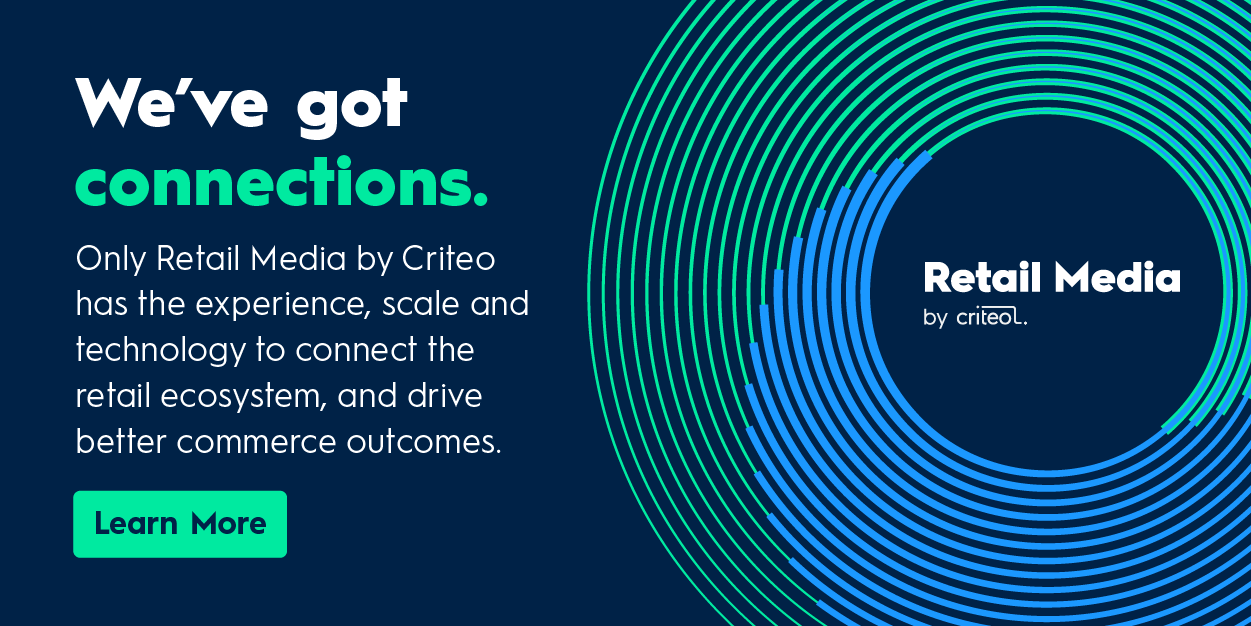This article is sponsored by Criteo.
Since mandated quarantines and reduced in-store shopping first became our reality early in 2020, global ecommerce has experienced a rapid rise. There have been millions of first-time ecommerce buyers, and as consumers have become accustomed to the convenience of the e-commerce experience, it is likely the new shopping behaviors they have adopted will stick.
For marketers, this has created an urgent need to prioritize ecommerce and to adapt age-old promotion strategies, so they can continue to reach shoppers and drive growth. To keep up with the new rules of ecommerce, here are a few things brands should keep in mind.
Tip #1: Create nuanced strategies
Advertisers need to follow consumers, which means more dollars will shift to shoppable ad formats and ecommerce properties. But it is important for advertisers to understand the differences in digital advertising channels – and to always keep the consumer experience at the forefront.
For example, while Amazon and alternative retailers both enable advertisers to reach consumers in a shopping mindset, the advertising tactics often differ. Amazon is a very search-based environment with a massive product catalogue and many third-party sellers. Additionally, the retailer followed Google’s model in creating keyword-based bidding for ad placements in search results.
Different strategies are required for advertising on the sites of retailers such as Target and Best Buy, who have more carefully curated sites. These retailers tend to have stricter relevancy rules on search pages, but they also allow for cross-sell and upsell opportunities on product detail pages.
Tip #2: Think beyond ROAS
Brands of course want to be able to prove the effectiveness of their marketing. More and more, they want to tie ad spend to sales outcomes and measure ROI, rather than rely on softer metrics. But it is important to remember that KPIs should be looked at differently based on the advertiser’s objective. For example, acquiring a new customer requires more investment, and thus ROAS will not be as high compared to a campaign that reached mainly existing customers.
In addition, forward-looking brands are digging into data and looking at other metrics, such as retail market share. By looking at trends over time, they can identify sub-categories where they can invest more in advertising – or perhaps advertise more SKUs – in order to gain share from competitors.
Tip #3: Be agile
As ecommerce has accelerated, brands have become nimbler and made major adjustments to their marketing plans on the fly. They moved dollars from offline channels to online channels. They also adapted their messaging to encourage consumers to stay safe and stay home. They looked for ways to provide and promote products that are more relevant to people who are working remotely, cooking more and looking for new forms of in-home entertainment.
Brands have also learned to respond quickly to supply chain disruptions. In a world where shoppers are experimenting with some online retailers for the first time and where out of stock notifications are sometimes unavoidable, brands need the flexibility to optimize advertising campaigns across the entire retail ecosystem.
Tip #4: Balance branding and performance
In times of economic uncertainty, many brands think it’s better to focus on performance or direct sales outcomes. Others think now is an opportune time to focus on building a brand – when there is less competition – so they will be in a better position to reap the rewards later.
Still others are eager to blend these strategies to capture the best of both worlds. A way to think about achieving this dual set of goals is with ad formats that combine brand assets with SKUs, and are now offered to brands by retailers such as Costco and Meijer. Additionally, some retailers and brands are beginning to partner together to execute and effectively measure offsite advertising, social advertising and even connected TV.
Tip #5: Break down internal siloes
Brands are also reassessing siloes within their organizations that may no longer make sense. Brands that have historically had one team focused on retailer.com and another team focused on the brick-and-mortar business are now finding that it is best to create omnichannel roles with a more holistic view. In addition, they are also finding media execution can be streamlined when the walls between shopper and consumer marketing teams come down. Some brands are even creating roles for transversal leads with deep expertise in ecommerce.
As the post-pandemic digital revolution accelerates onward, now is the time to act. Brands need to rethink media choices and internal organization in order to effectively work with traditional omnichannel retailers, online marketplaces and third-mile delivery partners in the emerging ecommerce environment. The brands who adjust to these new rules the fastest in the coming months will find themselves with a powerful opportunity to grow their brands and build valuable lifelong customer relationships.















